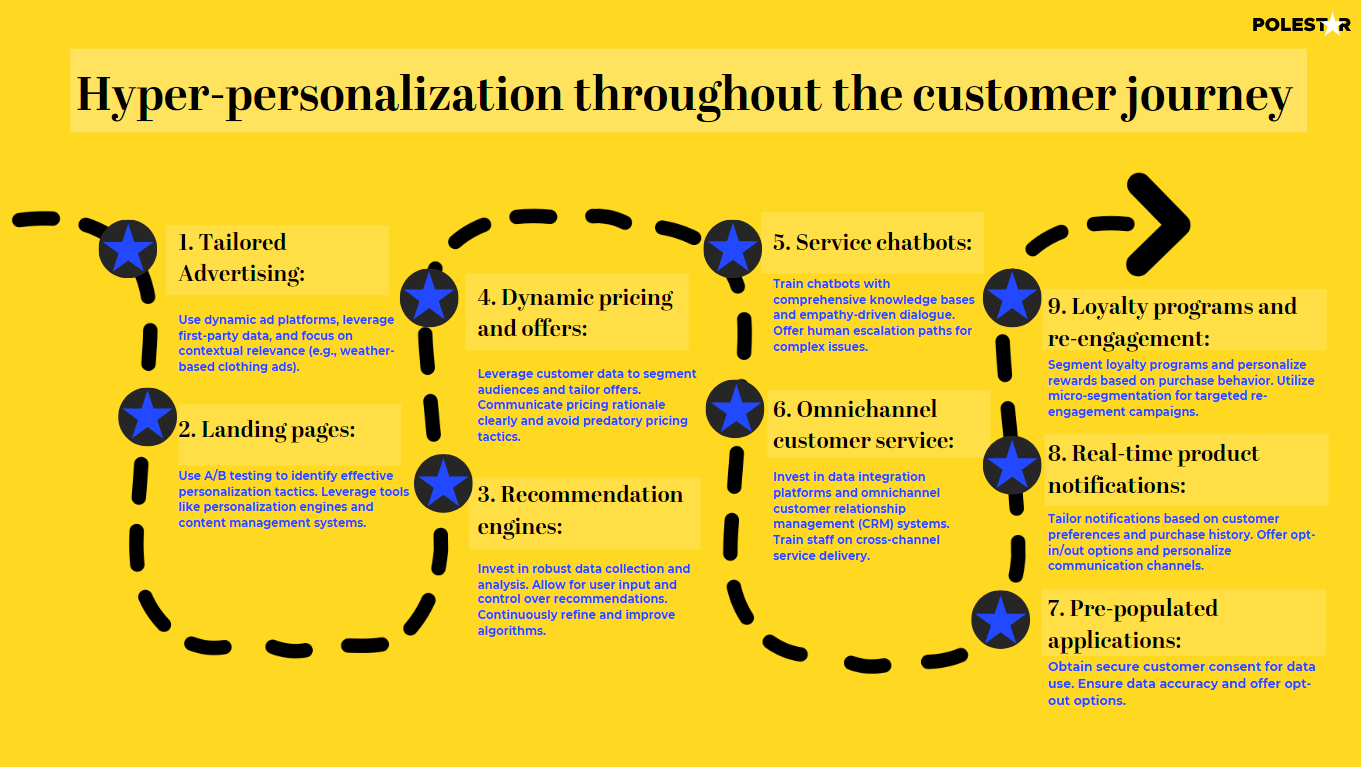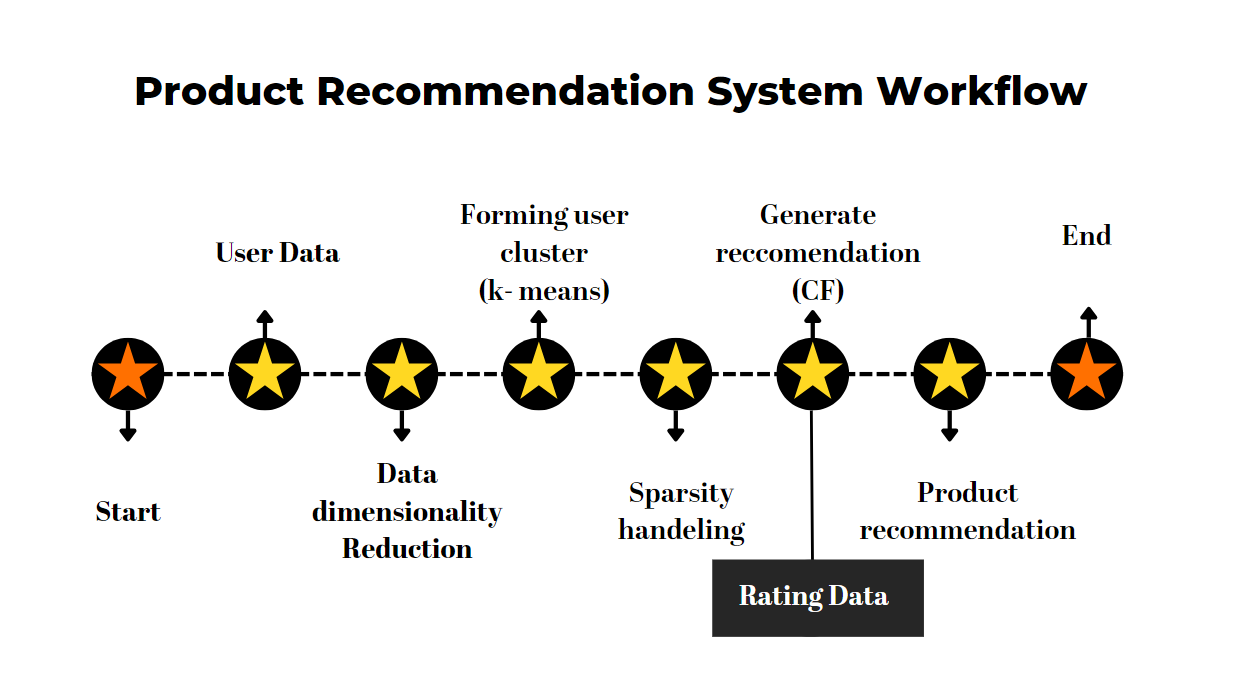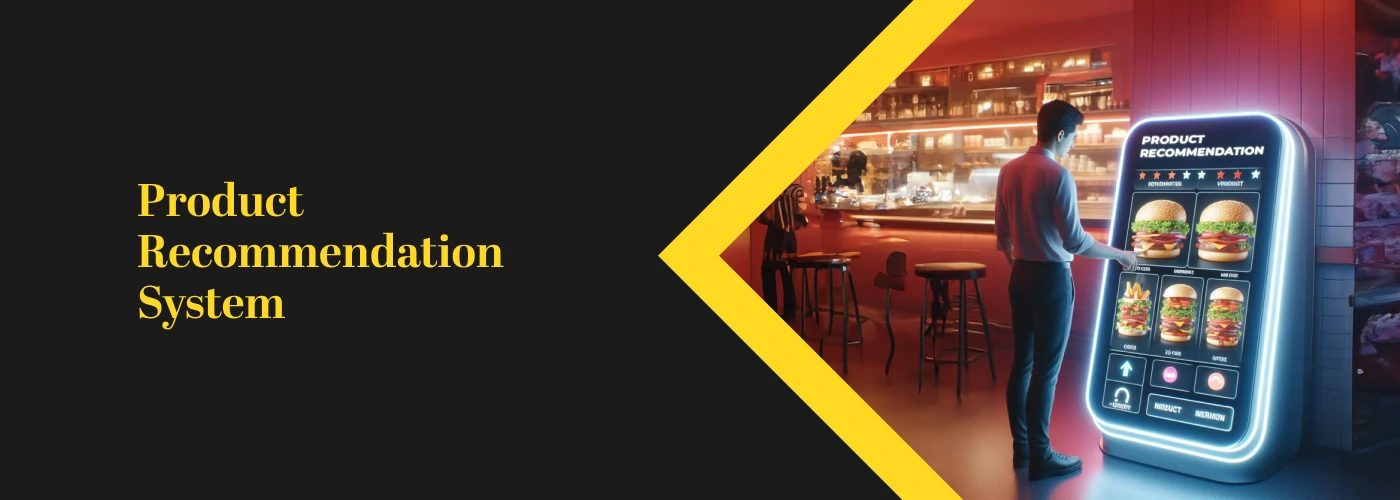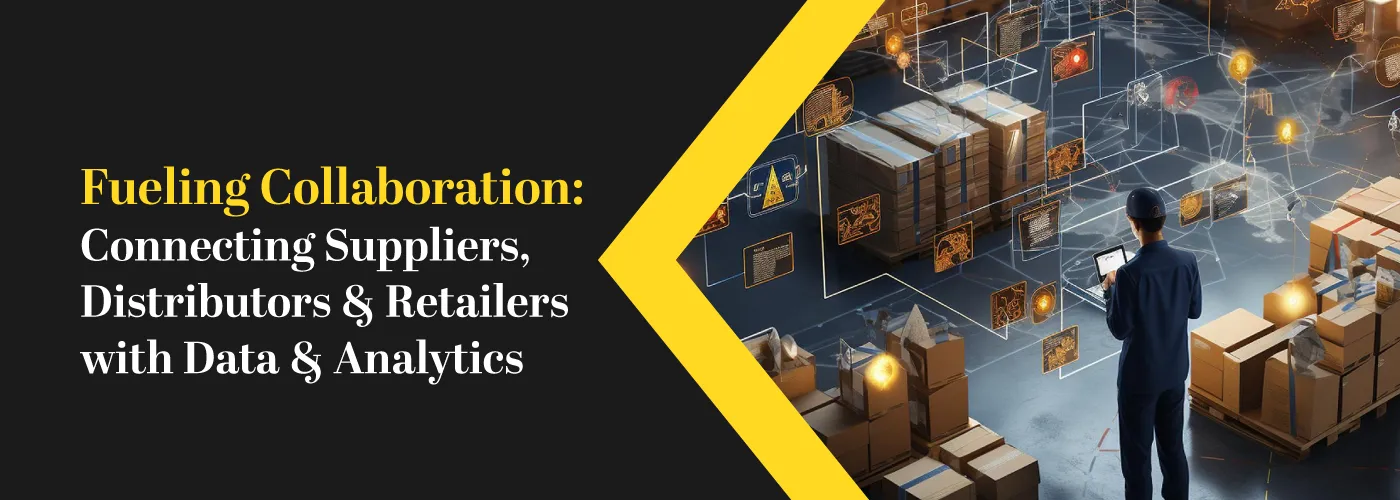Editor's Note: Gone are the days of one-size-fits-all shopping experiences. Today's consumers crave personalization, demanding unique suggestions, timely engagement, and consistent recognition across channels. This is where Product Recommendation Systems (PRS) come in, playing a crucial role in boosting customer satisfaction and sales. We will explore subjects like the key components of PRS, from customer data analysis to algorithm optimization and highlights real-world examples. Remember, personalization isn't just a trend; it's a necessity.
What Do Consumers Want?
With the rise of online shopping and access to more and more information on all products, store and product loyalty is declining, making effective personalization critical. There is a shift from “buyer beware” to “seller beware” as the customer has increasingly become more aware. They are looking for a personalized experience en-masse.
The following are the things that customers want from personalized product recommendations -
1. Offer unique suggestions beyond my usual choices.
2. Engage with me only when I'm in a shopping mood.
3. Prompt me about forgotten interests which might be difficult to keep track of.
4. Know me no matter where I interact with you.
5. Share value that resonates with me personally.
They crave more than just basic personalization. They desire innovative recommendations, timely engagement, valuable reminders, consistent recognition across channels, and meaningful value sharing. That is where product recommendation system for retail industry comes in.
Companies excelling at proving good recommendation generate 40% more revenue from these activities than average performers. Across US industries, shifting to top-quartile performance could create over $1 trillion in value.
~ McKinsey
Understand the Customer Journey
It is becoming increasingly difficult to make the customer follow the journey that you have carved for them but irrespective it is crucial to have a set guidelines and rough draft of how you want your customer to interact with your product.
Crafting customer analytics around the entire interaction process (customer journey), not just individual touchpoints, leads to greater growth. Regular customer engagement and research are crucial: Ongoing panels, ethnographic studies, and social media monitoring provide valuable feedback and identify potential issues.

But the topic we will be discussing in this blog is not about the customer journey it is more about the product recommendation systems (PRS) that must be complementary to the customer journey.
You might think that these are not related but the fact is, PRS has produced significant value to E-commerce giants, and finding innovative ways to keep the customer hooked is the goal of the customer journey and PRS is the ultimate way to keep them engaged.
If you think that setting up these engines is expensive and hence not economically viable, think again, 1 in 4 consumers are willing to pay more to receive a personalised product or service. So, in the larger scheme, you’ll be able to charge a premium as well as sell more products.
As a multichannel retailer, you must look for value in PRS beyond just E-commerce.
Product Recommendation Systems for Retailers
Product recommendation systems have become an integral part of the retail industry. In addition to personalization, they also help increase customer engagement. Retailers can capture the attention of customers and keep them actively engaged with their brand. This can lead to increased browsing time, more frequent visits, and ultimately, higher sales.
Furthermore, they can also positively impact the conversion rates. By suggesting products that are likely to be of interest to customers, retailers can increase the chances of a sale.
Let's tie the theory to the practical real world, Lowe’s is a major US home improvement Retailer that is actively investing in this technology to improve sales and engage “pro” consumers.

Lowe's has partnered with Google Cloud to upgrade its customer experience. Their MVP PRO (loyalty programme) helps them gather data for personalizing online product recommendations using data analytics and machine learning.
They are also empowering store associates with mobile tools for managing inventory and pricing and centralize data for better demand forecasting and decision-making. Retail product recommendations system helps them engage customers.
This omnichannel approach empowers customers with convenient choices. For example, they can order online and choose from in-store pickup, self-retrieval via Lowe's lockers, or even curbside delivery upon arrival. This translates to reduced friction and a more personalized shopping experience for everyone.
Key Components of Product Recommendation System
To implement an effective product recommendation system, it is important to understand its key components. These components form the foundation of the system.
One of the key components is customer data. Retail brands need to collect and analyse customer data to understand their preferences and buying behaviour. This data includes information such as purchase history, product views, and customer feedback.
Another the key component is the recommendation algorithm. It is responsible for analysing customer data and generating recommendations based on numerous factors such as purchase history, browsing behaviour, and demographic information.
Furthermore, the user interface is an essential component of a product recommendation system. A well-designed interface makes it blend into the background and the user has less things to worry about making it more seamless.
By understanding these key components, we can now explore further into the types of customer data that needs to be tracked for the system.
What data should be monitored to understand consumer intent?
One way to leverage customer data is through analyzing purchase history. Retailer can suggest related or complementary items by understanding what products a customer has previously purchased. For example, if a customer has bought a smartphone, the system can recommend phone cases or screen protectors.
Another way to personalize recommendations is by analyzing browsing behavior. By tracking which products a customer has viewed or added to their cart, the system can suggest related items or alternative options. This helps customers discover new products and find alternatives that may better suit their needs.
Demographic information is also valuable for personalizing recommendations. By understanding a customer's age, gender, location, and other demographic factors, the system can tailor recommendations to their specific preferences. For example, a retail brand targeting young adults may prioritize recommendations for trendy fashion items.
By leveraging customer data, retail brands can create a personalized shopping experience that enhances customer satisfaction and drives sales. The more accurate and relevant the recommendations, the more likely customers are to make a purchase and become loyal to the brand.
Advanced engines using PCA and K-Means Clustering
Traditional Recommendation Systems for Retail Customers falter in data-sparse environments, hindering their ability to personalize product suggestions. The paper “E-commerce Recommender System Using PCA and K-Means Clustering” by Dendy Andra and Abdurahman Baizal Baizal suggests a novel approach.
It proposes that retailers should leverage K-means clustering to segment users into clusters of similar preferences. Principal Component Analysis further refines these clusters by identifying key dimensions of user behaviour, reducing data complexity, and facilitating more accurate recommendations.
This "cluster-centric" methodology demonstrably outperforms traditional methods in data-scarce scenarios, as evidenced by the significantly lower Root Mean Square Error achieved in test evaluations.
Major technological improvements that can drive these recommendation engines forward are AI/ML. Artificial intelligence can help in generation of synthetic data or proxy data where there is a lack of real-world data. We have previously talked about how AI (Artificial Intelligence) is changing retail enterprises in this Blog.

How to Optimize the Recommendation Algorithm?
The recommendation algorithm is a critical component of a product recommendation system, as its accuracy and relevance directly impact the success of the system. Here are some best practices for optimizing the recommendation algorithm:
1. Collaborative filtering: This technique analyzes the behavior and preferences of similar customers to generate recommendations. By identifying patterns and similarities among customers, the algorithm can suggest products that have been popular among customers with similar tastes.
2. Content-based filtering: This technique analyzes the characteristics and attributes of products to generate recommendations. By matching the attributes of a customer's previously purchased items or viewed products with the attributes of other products, the algorithm can suggest items that are similar in nature.
3. Hybrid filtering: This technique combines collaborative filtering and content-based filtering to generate recommendations. By leveraging both customer behavior and product attributes, the algorithm can provide a more comprehensive and accurate set of suggestions.
4. Ensure that your model allows variations: Consider a music streaming service like Spotify. Instead of recommending only the same genre or artist repeatedly, the system could offer a mix of closely related music with high match percentages, and introduce some slightly less related genres or artists with lower match percentages.
5. Tailoring the interface: Customizing the recommendation interface optimizes the user experience. Tailoring layouts, designs, wording, timing, and placement for diverse segments enhances clarity and engagement. This boosts user satisfaction, encourages prolonged system interaction, and improves effectiveness.
By implementing these best practices, retail brands can optimize the recommendation algorithm and ensure that the suggestions provided are accurate, relevant, and capable of driving sales. They can then provide specific recommendation in the following formats:
Measuring the Effectiveness
Measuring and analyzing the success of a product recommendation system is crucial for retail brands to understand its effectiveness and make necessary improvements. Here are some key metrics and techniques for measuring and analyzing the success of a product recommendation system:
1. Click-through rate (CTR): This metric measures the percentage of customers who click on a recommended item. A higher CTR indicates that the recommendations are engaging and attracting customer attention.
2. Conversion rate: This metric measures the percentage of customers who make a purchase after clicking on a recommended item. A higher conversion rate indicates that the recommendations are effective in driving sales.
3. Average order value (AOV): This metric measures the average value of orders that include recommended items. A higher AOV indicates that the recommendations are leading customers to purchase higher-priced items.
4. Customer satisfaction: These metric measures customer feedback and satisfaction with the recommendations. Gathering customer feedback through surveys or reviews can provide valuable insights into the effectiveness of the system.
By measuring and analyzing these metrics, retail brands can gain valuable insights into the success of their product recommendation system and make data-driven improvements to enhance customer experience and drive sales.
Real-World implementations

Amazon
Amazon's Retail Product Recommendation Engine reigns supreme, driving 35% of purchases. It analyzes past purchases, browsing, reviews, and Prime usage to personalize options like "Keep shopping for" and "Deals based on your history." This dynamic system learns from customer feedback to constantly improve.

Facing Amazon's threat, Best Buy launched a successful AI-based product recommendation engines in 2015. Their system thrives on blending online and offline data. Customers get store-specific recommendations through the app, identifying in-store availability and nearby locations to see products in person. Best Buy analyzes past purchases, browsing history, and features like "My Best Buy" to personalize suggestion.
How can Polestar help you optimize
We help you understand your data better and help you harness data analytics. We ensure businesses transcend the pitfalls of over-specialization. Our expertise lies not only in refining algorithmic accuracy but also in tailoring recommendation interfaces for diverse customer segments. if you are looking for ML-based product recommendation engine, We can be the right partner to help you on that journey.
From optimizing layouts to fine-tuning wording and timing, we empower enterprises to deliver personalized experiences that captivate users. Collaborate with Polestar to unlock the full potential of your product recommendation system, fostering customer loyalty, and driving sustained business growth in the dynamic landscape of digital commerce.



